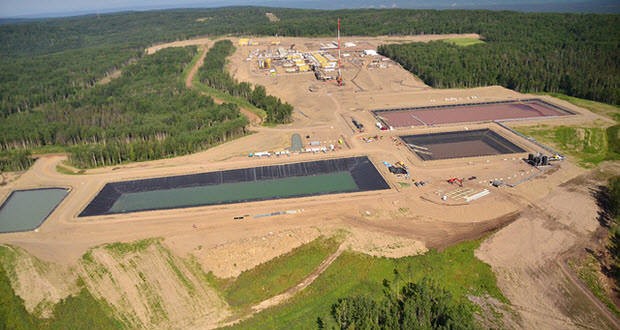Top Environmental Concerns in Fracking
Post on: 16 Март, 2015 No Comment

March 19, 2012
As a result of recent technological innovations improving the ability to extract oil and natural gas from shale and other rock formations, the popularity of hydraulic fracturing, or fracking, has surged, leading to new investment opportunities and positive growth for the domestic gas and oil production industry. With the expansion, however, has come risk and scrutiny. [1]
To help quantify and qualify those potential risks, and in response to escalating public concern, Congress directed the U.S. Environmental Protection Agency (“EPA”) to conduct a study into the potential impacts of fracking on drinking and ground water. A first report of results is expected by the end of 2012, with a final report to be released in 2014.
Although the evolving industry offers many potential benefits, there are a number of environmental issues leading to increased federal and state regulation of the industry.
(1) Water Issues: Contamination of Groundwater. There is considerable concern that fracking can lead to contamination of groundwater as a result of spills, faulty well construction, or other means, including disposal into underground injection wells. In 2010, residents of Pavillion, Wyoming complained about the condition of their well water. In December 2011, EPA released a report finding that compounds associated with fracking chemicals had been detected in the groundwater beneath the community and health officials advised residents not to drink the water. EPA did emphasize, however, that its findings are specific to the area due to the fact the fracking activities in Pavillion occurred below the level of the drinking water aquifer and close to water wells, unlike other locations where drilling is more remote and fracking occurs much deeper than the level of groundwater that would normally be used. In January 2012, EPA began testing water supplies for 61 homes in Susquehanna County, Pennsylvania, and provided replacement drinking water supplies to four homes where water tests raised health concerns. Both the state Department of Environmental Protection and the driller active in the area are cooperating with the agency.
(2) Air Quality Issues. Fracking activities can lead to emissions into the air of methane, volatile organic compounds, hazardous air pollutants, and greenhouse gases. EPA, the Department of the Interior, other federal agencies and states are currently working to better characterize and reduce the air emissions from fracking and their associated impacts. For example, through the Clean Construction USA program, EPA is promoting newer, more efficient technology and cleaner fuels to increase the ways in which hydraulic fracturing equipment and vehicles reduce emissions. Emissions from fracking may also contribute to global climate change, according to a study performed by a group of researchers at Cornell University. However, another group of Cornell researchers recently released a competing report claiming the previous research overestimated leaks from fracked wells.

(3) Water Issues: Stress on Existing Water Supply. According to EPA’s senior policy counsel Robert Sussman, the strain that heavy-volume surface and groundwater withdrawals of freshwater used in the fracking process may be placing on water resources is one of the top concerns related to the process. However, EPA has little authority to address such issues and regulation will be largely left to local and state governments.
(4) Water Issues: Management of Wastewater. The wastewater associated with shale gas extraction can contain high levels of total dissolved solids, fracturing fluid additives, metals, and naturally occurring radioactive materials. Unfortunately, many municipal water treatment plants are not designed to remove some of these contaminants. Methods for disposal of such wastewater include deep well injection, surface impoundments for storage or disposal, recycling methods and discharge to a properly-licensed treatment facility. However, these disposal methods are not without criticism. Following a series of earthquakes clustered in an area less than one mile from a deep-injection well used mostly used for oil and gas fluid waste disposal, the Ohio Department of Natural Resources began investigating. The Ohio DNR concluded the seismic activity was likely induced by the deep injection well and, on December 31, 2011, the governor ordered a moratorium that is still in place on six Class II deep injection wells. The Ohio DNR also announced new regulations for the transportation and disposal of the wastewater, requiring operators to supply extensive geological data before drilling (including the existence of known geological faults) and to implement monitoring devices. Currently, oil and gas operators are generally not required to obtain a National Pollutant Discharge Elimination System (NPDES) permit for stormwater discharges from fracking sites unless there is a reportable quantity spill or the discharge causes or contributes to a water quality violation.
(5) Disclosure of Fracking Chemicals. Five states—Colorado, Montana, Louisiana, Texas and North Dakota—require operators to post data regarding the chemicals used in fracking with an online database, the FracFocus Chemical Disclosure Registry. It is expected that one potential result of the EPA study into the effect of fracking on water supply could be federal requirements for disclosure. Given this potential, operators are well advised to maintain records regarding the usage of chemicals on a well-by-well basis.
[1] In the event a definition is needed. Hydraulic fracturing is the gas extraction process of injecting large volumes of chemically treated water and sand underground to break apart gas-bearing rock formations.














